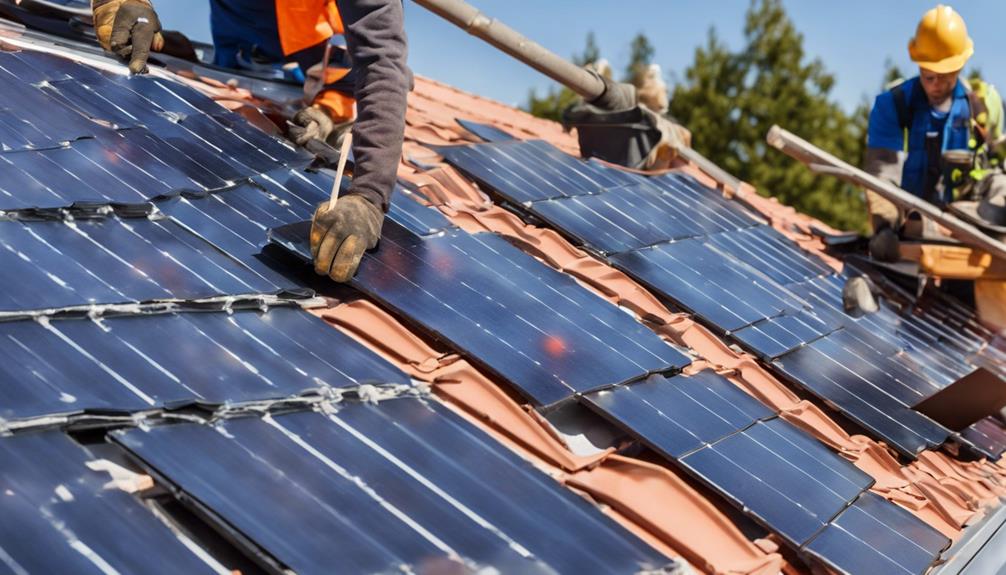
In the world of renewable energy, Enphase solar panels have emerged as a leading choice for homeowners and businesses alike. This comprehensive guide will explore the various aspects of Enphase solar panels, including their technology, benefits, installation process, and why they stand out in the solar market.
What Are Enphase Solar Panels?
Enphase solar panels are part of an innovative solar energy system that utilizes microinverter technology. Unlike traditional solar panels that use a single inverter for the entire array, Enphase panels come with microinverters attached to each panel. This design allows for optimal energy production even if some panels are shaded or dirty. The Enphase system also offers a range of smart features, including real-time monitoring through a user-friendly app, which enhances the overall user experience and maximizes efficiency.
The Advantages of Choosing Enphase Solar Panels
One of the primary reasons homeowners and businesses opt for Enphase solar panels is their numerous benefits. Firstly, the microinverter technology ensures that each panel operates independently, which significantly reduces the impact of shading. This means that even if one panel is underperforming, the others can still produce energy efficiently. Additionally, Enphase solar panels are known for their durability, with a robust design that can withstand harsh weather conditions. The system also comes with a 25-year warranty, offering peace of mind for your investment.
Understanding the Technology Behind Enphase Solar Panels
The technology behind Enphase solar panels is what sets them apart from traditional solar systems. Each microinverter converts direct current (DC) generated by the solar panels into alternating current (AC), which is what most home appliances use. This conversion occurs at the panel level, leading to increased energy production and efficiency. Furthermore, Enphase panels have integrated monitoring capabilities that provide real-time data on energy production, which allows users to track their system’s performance and quickly identify any issues.
Installation Process for Enphase Solar Panels
Installing Enphase solar panels is a straightforward process that involves several key steps. First, a professional solar installer will assess your property to determine the best placement for the panels, taking into account factors such as roof orientation and shading. After the design is finalized, the installation team will mount the panels and connect the microinverters. Since each panel operates independently, the installation process is often quicker and less complex than traditional systems. Once installed, the system will be connected to your electrical panel, and you will be set to start producing clean energy.
Comparing Enphase Solar Panels to Traditional Systems
When comparing Enphase solar panels to traditional solar systems, several factors come into play. One of the most significant differences is their efficiency in energy production. Traditional solar panels rely on a single inverter, meaning that if one panel underperforms, the entire system’s output can suffer. In contrast, the microinverter technology of Enphase panels allows for greater overall efficiency, especially in partially shaded conditions. Additionally, the real-time monitoring feature provides users with insights that can lead to better performance management.
Cost Considerations for Enphase Solar Panels
Investing in Enphase solar panels is an important financial decision for many homeowners. While the upfront cost may be higher than traditional solar systems, the long-term savings on energy bills can make up for this initial investment. Enphase solar panels are designed for maximum efficiency, which means greater energy production and lower electricity costs over time. Furthermore, many states offer incentives and rebates for solar installations, which can help offset the initial costs. When considering the total cost, it’s essential to factor in the durability and longevity of Enphase panels, as their extended warranty often translates into fewer maintenance costs.
Environmental Impact of Enphase Solar Panels
By choosing Enphase solar panels, you are making a positive impact on the environment. Solar energy is a clean, renewable resource that reduces reliance on fossil fuels and lowers greenhouse gas emissions. Enphase panels contribute to a more sustainable future by harnessing the sun’s energy to power homes and businesses. Additionally, the increased efficiency of Enphase systems means that less energy is wasted, further enhancing their environmental benefits. By investing in solar energy, you are not only saving money but also playing a role in combating climate change.
Making the Switch: Is Enphase Right for You?
Deciding to switch to Enphase solar panels is a significant choice that requires careful consideration of your energy needs, budget, and environmental goals. If you live in an area with frequent shading or variable weather, the advantages of microinverter technology may be particularly beneficial. Additionally, if you value real-time monitoring and superior efficiency, Enphase panels could be the perfect fit for you. It’s advisable to consult with a solar energy expert who can provide personalized recommendations based on your specific circumstances and help you navigate the various financing options available.
In conclusion, Enphase solar panels offer an innovative, efficient, and environmentally friendly solution for those looking to invest in solar energy. With their advanced technology, numerous benefits, and commitment to sustainability, Enphase panels are a smart choice for homeowners and businesses alike. If you’re considering making the switch to solar, exploring the options available with Enphase could be the first step toward a brighter, cleaner future.





